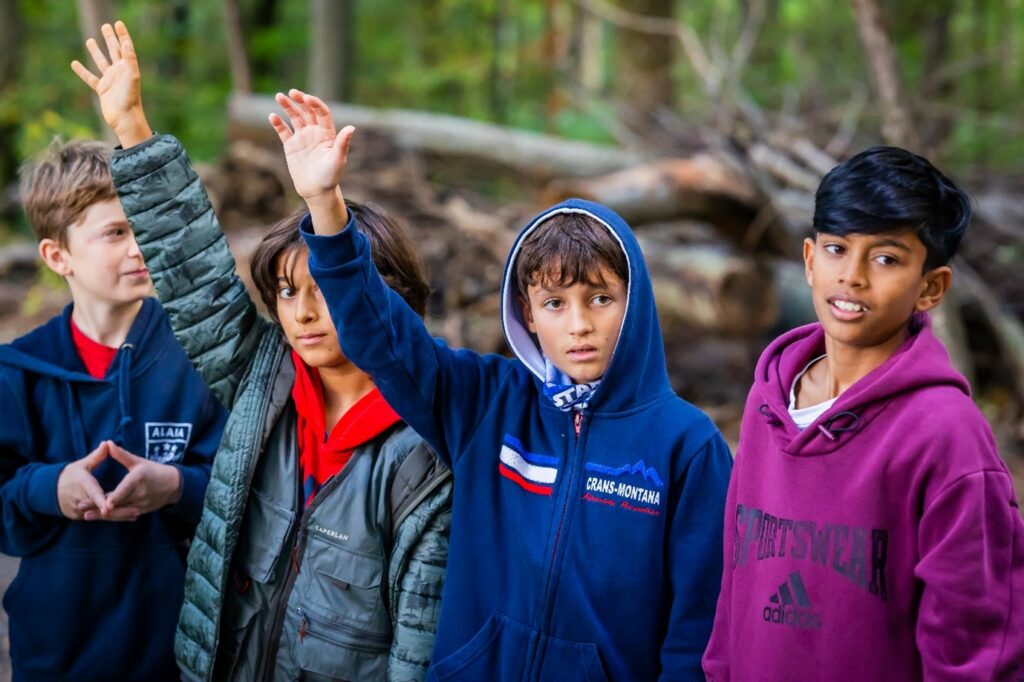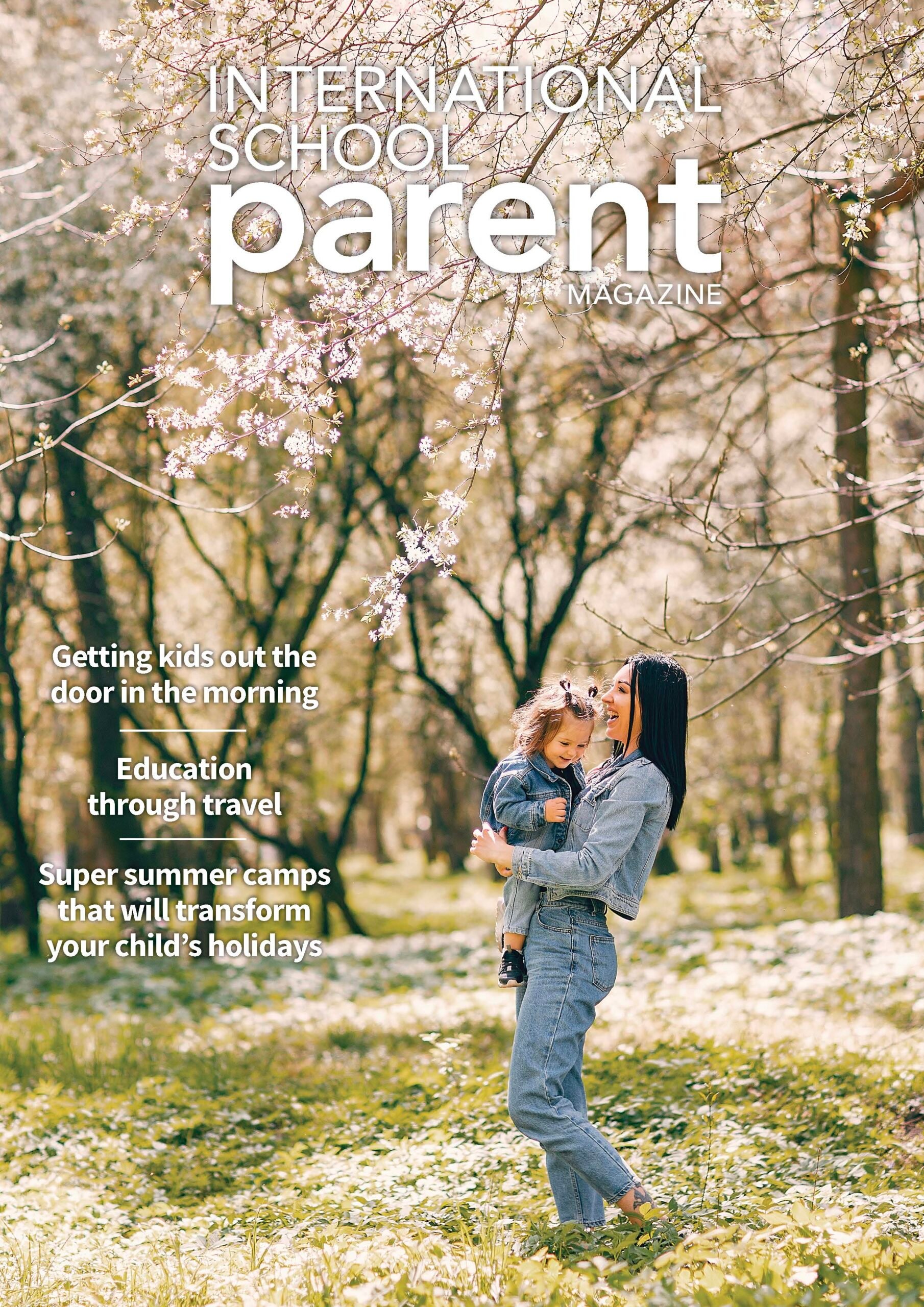“À la queue leu-leu…”– A morning in the life of the International School of Lausanne’s dual language students…
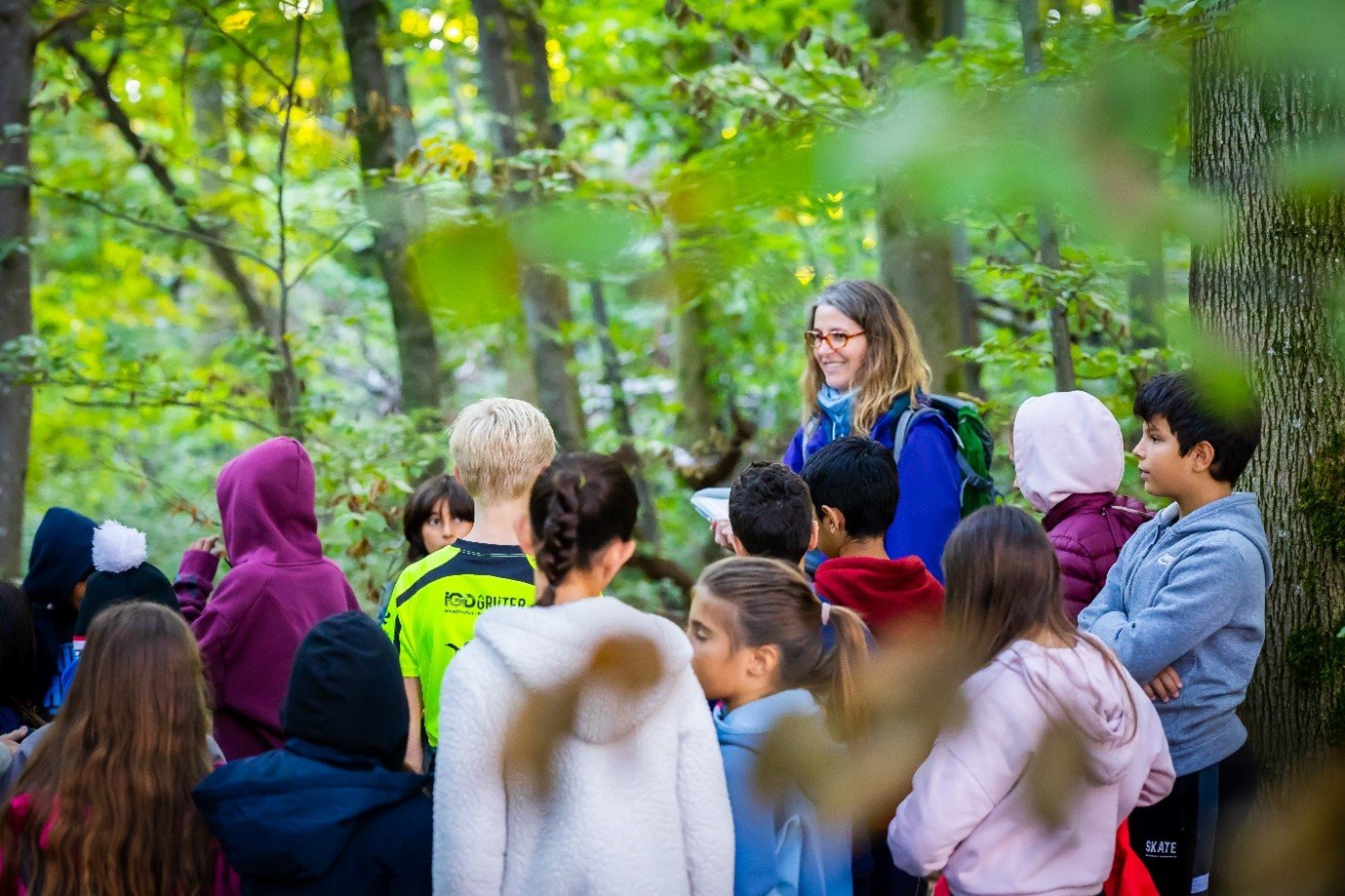
“If we live in Switzerland as adults, we need to at least know French.” (Margot, Year 6) Have you ever wondered what it would be like to learn in two languages? For the fortunate students of the International School of Lausanne’s Dual Language programme, bilingual learning, with its myriad of educational and social benefits, is an integral part of the curriculum. Read on for some vignettes of life in the dual language Year 6 and Year 4 classes, or scroll down to discover our dual language teaching staff’s reflections on the great success of the programme so far.
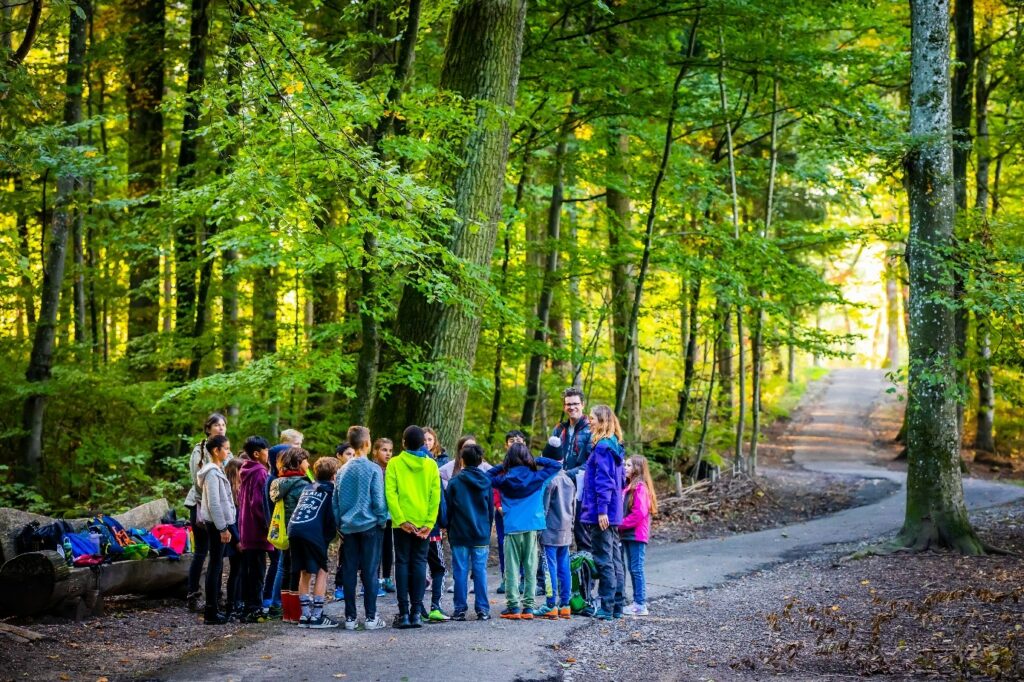
“And into the woods we go,” wrote legendary naturalist and conservationist, John Muir, “to lose our minds and find our soul.”
When the International School of Lausanne’s Year 6 dual language class ventured into our local woods, Réserve Forestière des Vieux-Chênes, last Tuesday, it perhaps wasn’t with Muir’s iconic words echoing in their thoughts; nor was the lesson purpose – to learn about the animaux sauvages of Switzerland – quite in line with the concept of losing their minds.
However, as twenty-two pairs of excited feet trod their way beneath the leafy Autumnal archway into nature’s majestic classroom, and the gentle rays of early morning sun sliced golden shafts of light into the crisp clear air, birdsong and the sweet scent of mouldering leaves awakening the senses, many souls must have been stirred.
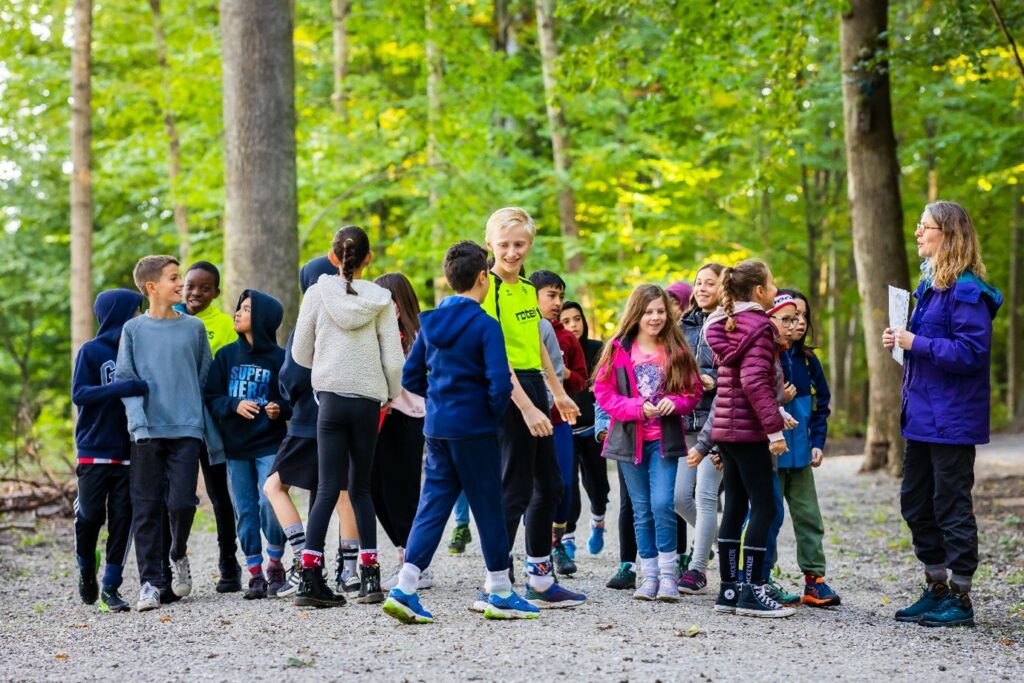
The Year 6 students trooping into the woods to learn about le loup and le lynx and l’ours in a lesson led by a representative from Pro Natura, Switzerland’s oldest nature preservation organisation, as part of a Unit of Inquiry on Design & Cooperation, chatted animatedly about the experience of learning in two languages.
For Margot (Year 6), learning in French as well as in England makes sense where the future is concerned: “If we live in Switzerland as adults, we need to at least know French.”
“Sometimes I have trouble thinking of the right word, but I think that’s normal when you’re learning a new language,” confides Sophia (Year 6), going on to express how satisfying she finds being able to communicate in two languages – especially when that involves learning outside: “Once, I went hiking and heard an actual cuckoo bird! It’s really exciting when we go outside to learn.”
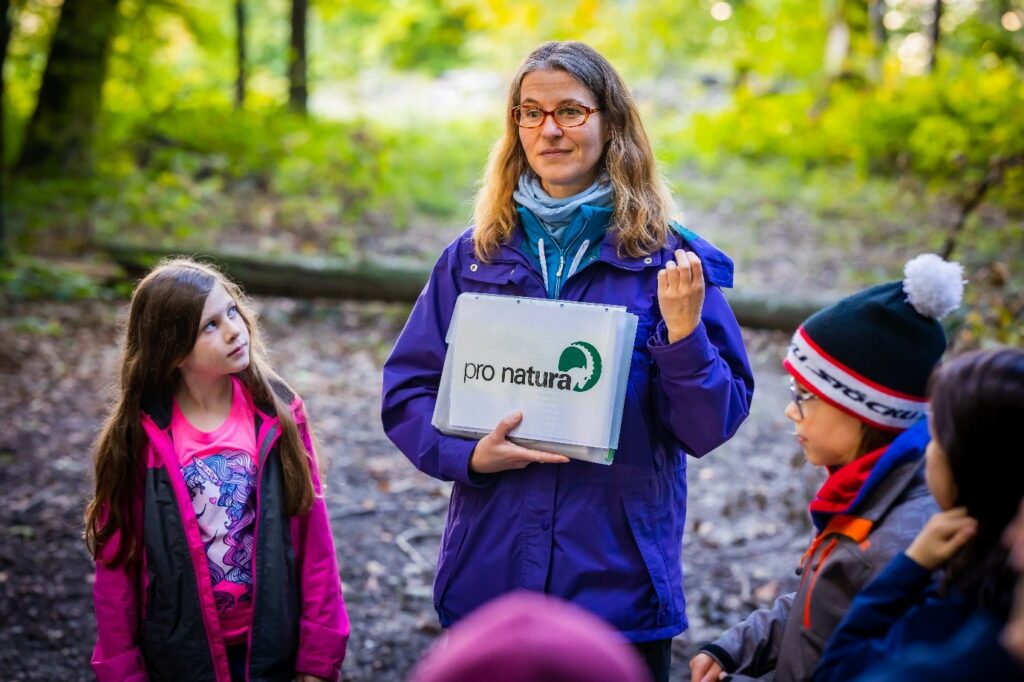
The students gather in a circle in the heart of the forest to listen to Cindy, the Pro Natura representative, explain the lesson learning goals – to learn about the wild animals of Switzerland, and to communicate and cooperate with one another in different team activities as they do so (in French, of course!).
“On va rentrer la royaume des animaux,” Cindy tells her rapt listeners, some of whom seem rather daunted at the prospect of encountering “les animaux sauvages” in the forest.
“Are we actually going to see wolves and bears?” a few nervous voices ask in trepidation. Cindy smiles, and reassures the students that there are no wolves, bears or lynxes dwelling in this particular piece of Lausanne woodland: “Il n’y a ni ours, ni lynx, ni loup dans cette forêt.”
“Awwwww…” the entire class groans in disappointment.
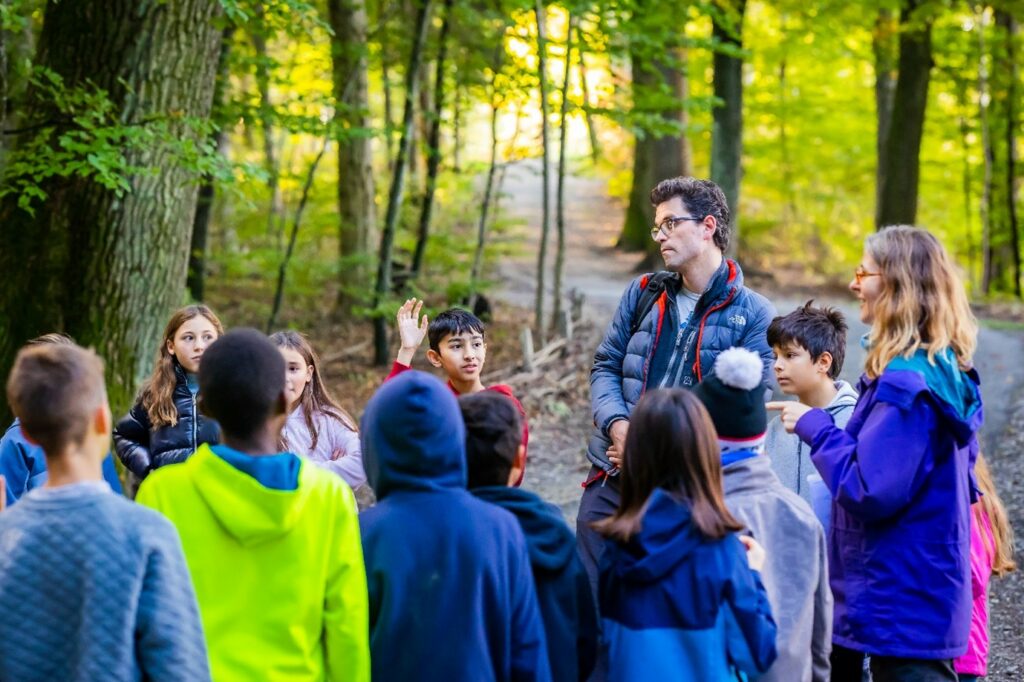
Cindy then asks each student to share something that they already know about wild animals, and something that they would like to learn. The students take it in turns to express their ideas, speaking in French throughout.
Then, assured there is no prospect of encounters with any lurking large predators, the students fall into single file behind Cindy – “À la queue leu-leu…”(to follow in the footsteps of the wolf; a French figure-of-speech meaning to walk in single file) – and tramp through the crisp leaves and soft mossy floor of the forest itself.
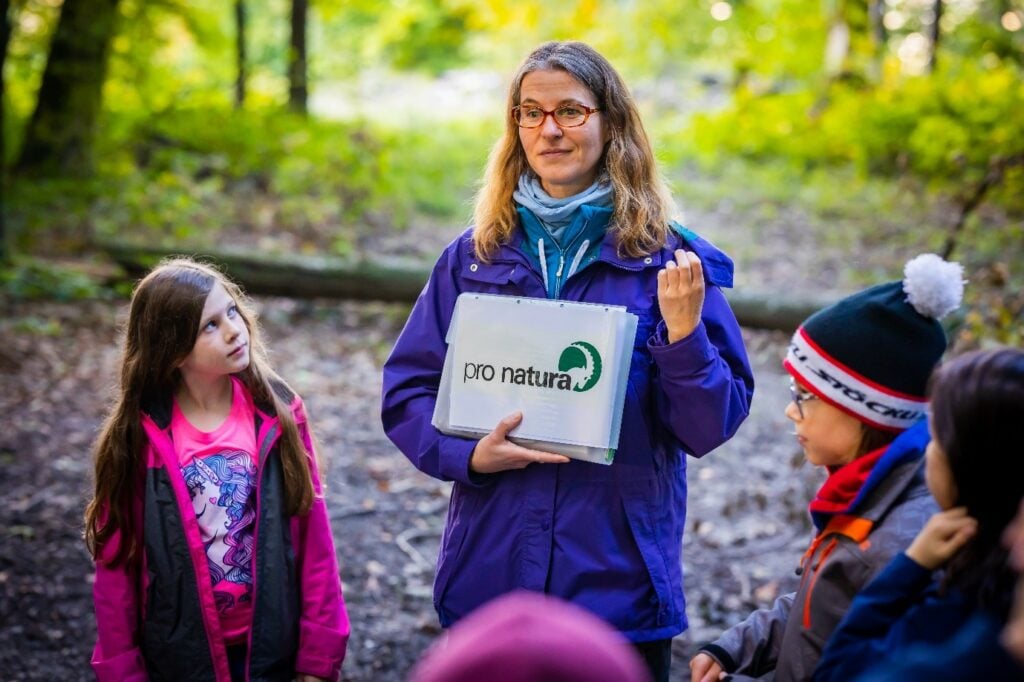
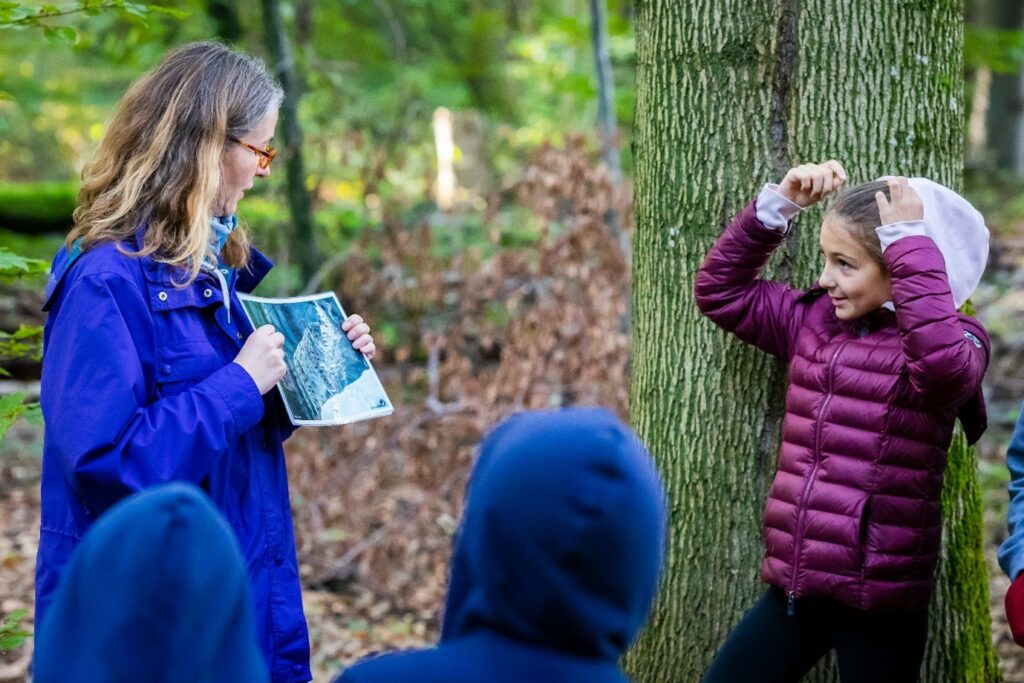
Here, beneath the softly radiant canopy of leaves, the class take part in a range of activities involving active listening and teamwork. First, Cindy holds up laminated photographs of different wild animals – “Le renard!” “Le cerf!” “ Le lynx!” the students shout out excitedly as they see each animal, often with accompanying “Awwws” regarding the cuteness of said animal – and the class discuss what they know about each creature, with Cindy filling in the gaps in knowledge.
Then, in teams, the students take part in different challenges, communicating with one another in French as they do so.
“The challenge this morning is to get the students to trust themselves as a team,” explains Mme Béa (Teacher of French), “and to take value and faith in what the others are saying. Everything this morning is centred around dialogue.”
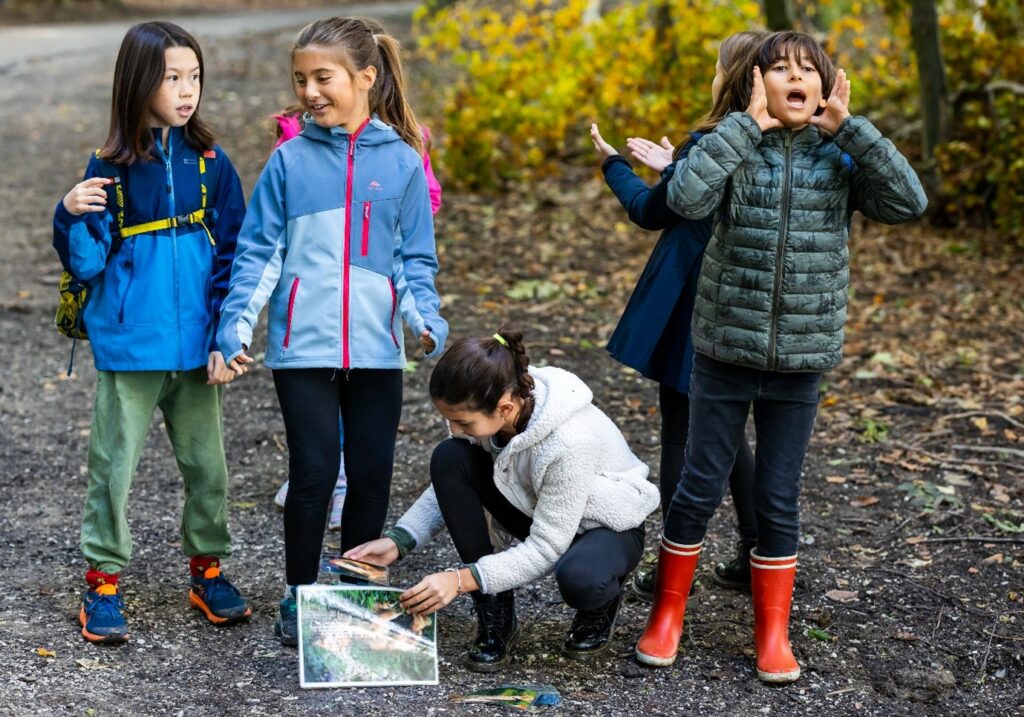
Mme Béa, who, alongside Mr Koen (Teacher of Year 6), has been gently supporting and encouraging their Year 6 class in the morning’s learning, is one of six members of the primary dual language teaching team. While the Year 6s were “following in the footsteps of the wolf”, students back in the colourful and vibrant classrooms of the ISL primary school take part in a range of learning activities in French.
In the Year 4 classroom, students returning from recess gather, sitting cross-legged on the floor together, for story time. Mr Cornet (Teacher of French) reads the story Le Camping-Car de Mon Papy to the class, who are utterly absorbed in the narrative, and lean in to look more closely at the illustrations. The story weaves its spell over the students; the mood in the room is peaceful.
As Mr Cornet closes the book, however, and the students jump to their feet and return to their seats for the next part of the lesson, the classroom is galvanised with their energy. A lesson on creating graphs commences, with Mr Cornet leading the lesson at the whiteboard, while Mr Dailly (Teacher of Year 4) supports individual students in their learning.
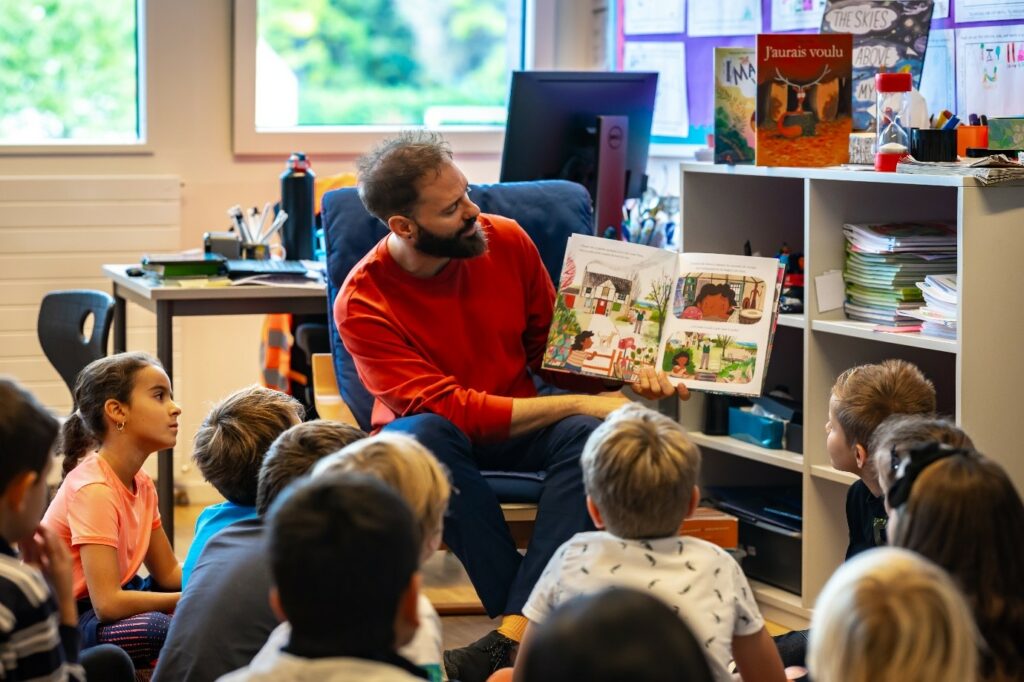
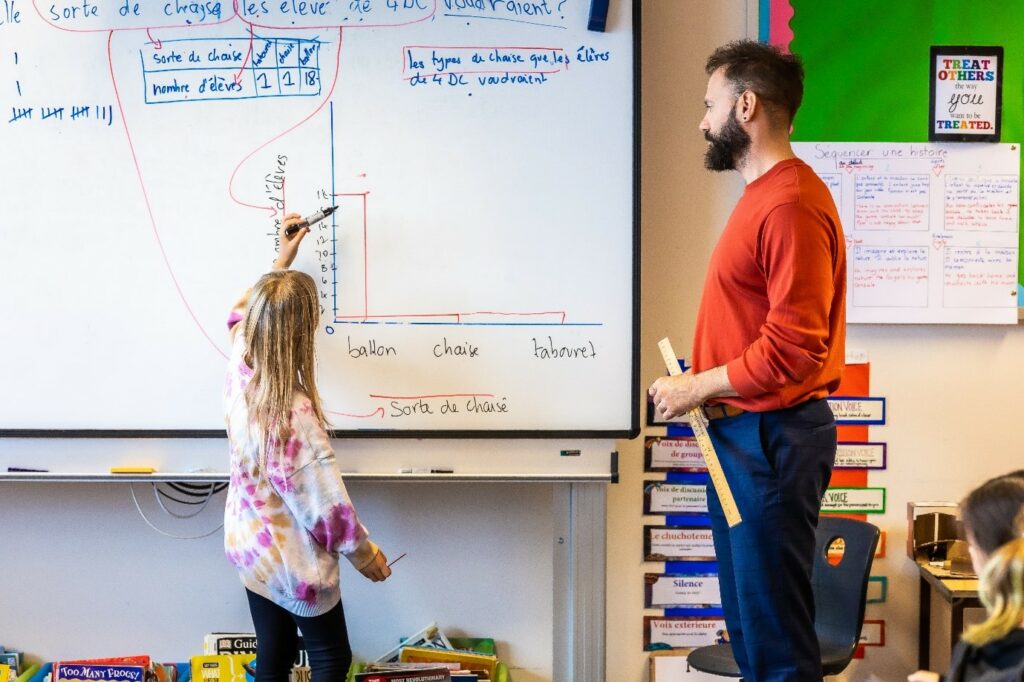
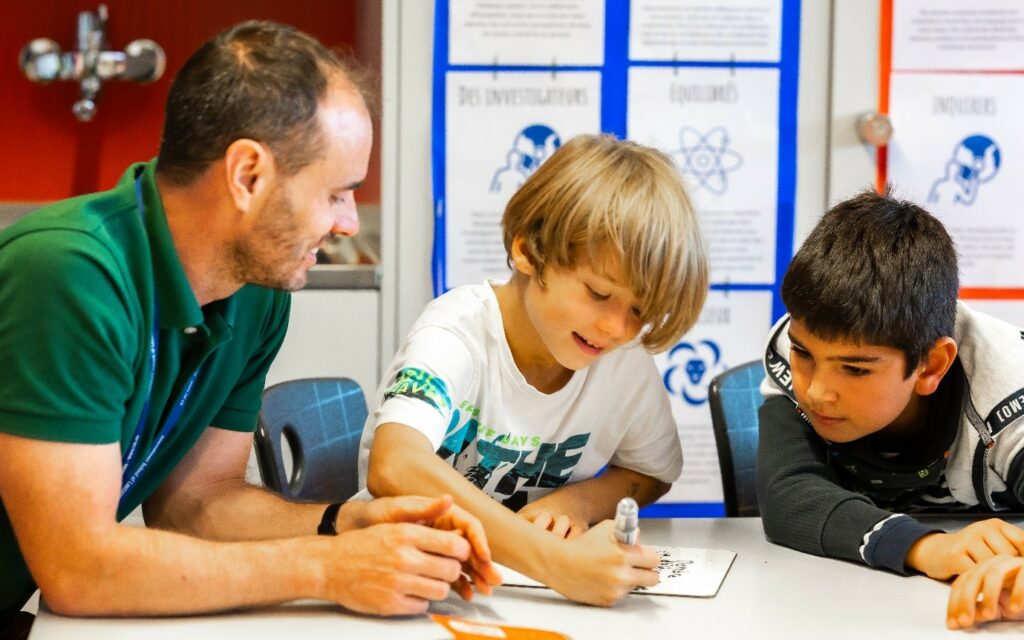
“A huge benefit for the students in a dual language classroom is having two teachers for some of the French lesson. This makes it easier to really focus on small group work, or have on teacher work individually with different students, while the other is with the class. We have seen a noticeable improvement in the French of the learners, particularly in their written expression,” observes Mr Dailly.
The enthusiastic discussion – a little English here and there, but mainly animated French – in the room around him, as the groups collaborate in the creation of their graphs, is testament to his words.
So how do the teachers of the dual language programme feel about its overall success so far? Read on for some of their reflections…
On the teaching and learning highlights:
“Working with a teaching partner is such an enriching experience. It goes beyond collaborative planning with fellow classroom teachers. Because you are jointly delivering parts of the curriculum, it requires a great amount of trust. At the same time, it is a process that encourages us to consider the other teacher’s perspective more deeply. Together we transformed two writing units already, each of us bringing in our own passions, interests and ideas. I believe that the students feel this injection of passion in our joint teaching.” (Mr Koen, Teacher of Year 6)
“I completely agree with Koen (who is way more eloquent than me!). I would also add that co-teaching is embedded daily professional development. I learn from my co-teachers constantly, in areas such as classroom management, social and emotional support, and creative thinking. It is lovely to see the frequent discussions between the students about the similarities and differences between the languages; and I must say I love the translanguaging going on between the students – for example, “Je vais à la library to return mon book sur les wolves…” (Ms Béa, Teacher of French Year 3 and Year 6)
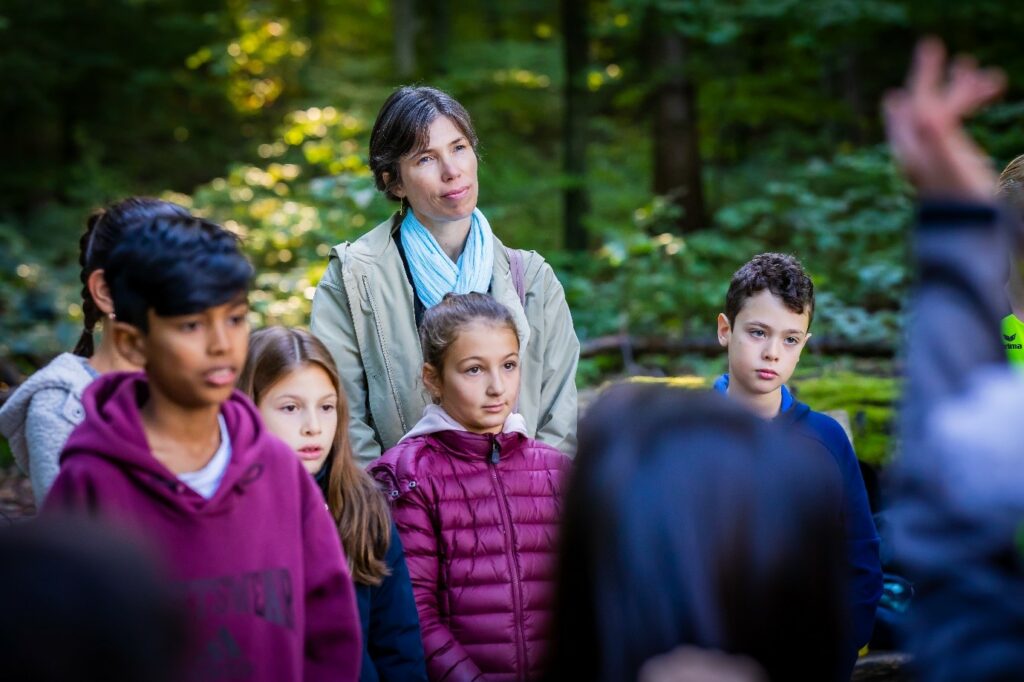
On how the students who are just beginning to learn French cope with the challenges of being in a dual language classroom:
“Students who arrive with one language more developed than the other for the moment can participate and share themselves in another way. We have some students in the school who are also new to learning English. The Dual Language students benefit from learning in two languages with two teachers who are collaborating on developing lessons that are individualised to them.” (Ms Smith-Tesaury, Teacher of Year 3, Literacy Coordinator)
“All students in the class have a basis of French, having learned French as a specialist class previously. What is more, one of our new students is a fluent French speaker, and is now learning English. It is lovely to see students supporting one another (and their teachers), switching back and forth between languages. All this makes language learning a less threatening and more natural affair.” (Mr Koen)
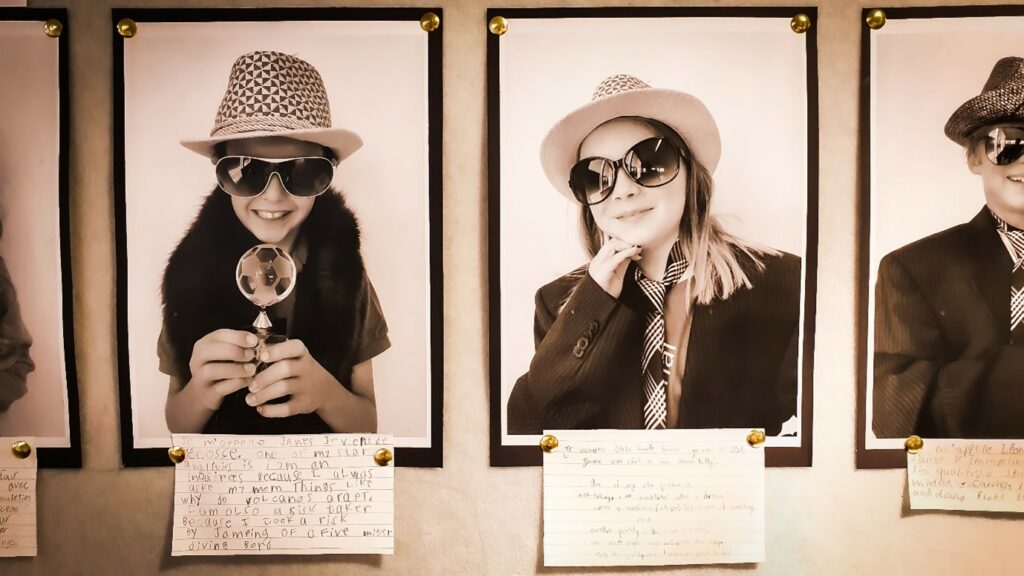
“I would say that it is a similar experience as students who are beginning to learn English cope as they arrive at ISL. We do differentiate and adapt for all our language learners. I check in with all lower-level French speakers (and one EAL) at the end of each day. I usually get more smiles than worried looks and we have a chat about how awesome it feels to have had a day where they understood quite well. There are some moments where we see a student needs extra support, and we do our best to address that in either language. (Ms Béa)
“Having pioneered the programme last year in Years 4 and 5, we had exceptionally positive feedback from both parents and students. From our observations and data collected over the course of the year, we observed that students made great progress in their ability to converse, reflect and interact in both languages in a wide variety of contexts. Our initial experience gave us the opportunity to reflect upon our own practice, enabling us to adjust where necessary to ensure that we are providing the best possible opportunities for continued growth and success of our students and the programme itself.” (Ms Marlow, Teacher of Year 5)
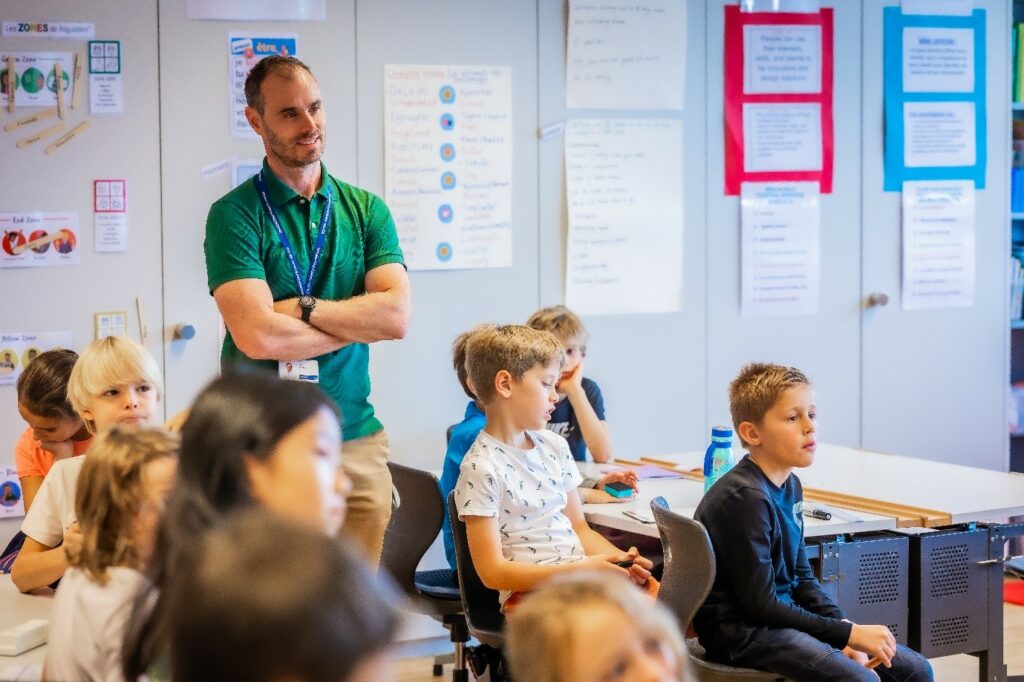
And some final words on the power of bilingual learning…
“The students in the dual language classroom have the unique opportunity to strengthen their conceptual understanding and problem-solving skills through the transfer of knowledge from one language to another. In gaining confidence with regards to communicating in the host language, the children will also have the opportunity to deepen ties with the local community. (Ms Marlow)
Full information about the philosophy and structure of the International School of Lausanne’s dual language programme can be found at this link. As the first cohort of dual language students move into the secondary school in August 2023, they will continue the possibility to study some academic subjects in French. More definite plans will be shared with our Year 6 parents in December.
Click here for some inspirational words on the value of learning another language.
